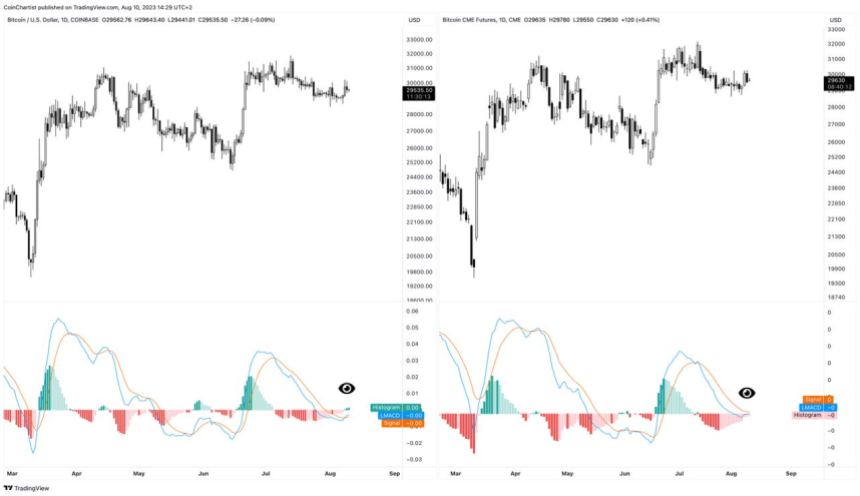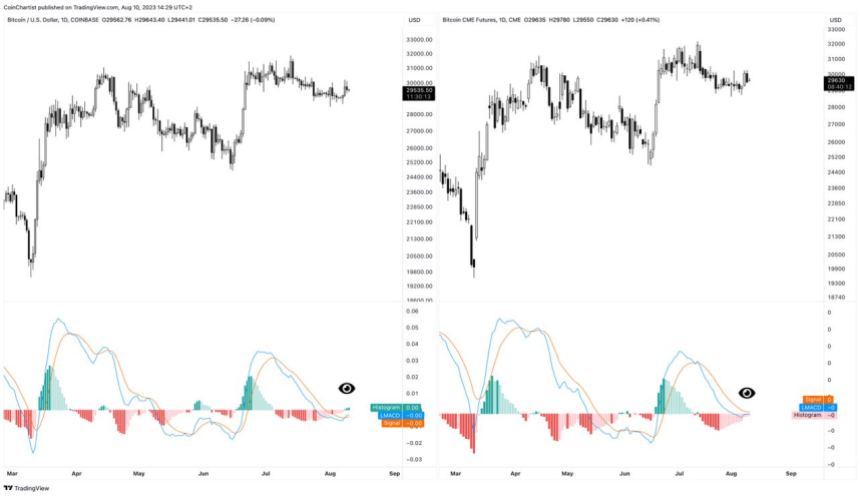This week, Bitcoin traders braced for a breakout as a major technical buy signal was triggered and BTCUSD temporarily skyrocketed above $30,000.
However, they ran into trouble, as the market immediately collapsed again. Interestingly, the fakeout may have been predicted by a divergence between two BTCUSD price charts.
Why price patterns and technical signals can fail
Price patterns are difficult to trade in cryptocurrencies. Because so many eyes are on the same pattern meeting precise parameters, the market has a way of making people pay for trading on the obvious. For example, a rising wedge pattern is usually bearish, but it can break out to the upside.
The same goes for technical signals that a large portion of traders pay attention to, such as notable crossovers and changes in momentum. This is exactly the case recently with a bullish crossover of the daily BTCUSD Moving Average Convergence Divergence (MACD).
The MACD is a momentum indicator that gives a buy signal when the MACD line crosses the signal line from below. This signal has not only appeared in Bitcoin, but it has also been confirmed on BTCUSD spot exchanges, so what gives? It was a fake signal from the ‘future’.

Conflicting signals | BTCUSD on TradingView.com
Discover possible differences with Bitcoin Futures
By “future” we mean BTC CME Futures, also known as Chicago Mercantile Exchange’s Bitcoin derivatives product, which institutions use to speculate on the underlying price of BTCUSD. The BTC CME Futures chart does not always reflect the spot BTCUSD charts 1:1. All the differences between the two platforms have led to fakeouts and fake breakouts in the past.
Part of the reason for this is that the platform shuts down for a short period of time each day, and for the entire weekend starting Friday afternoon. The result is a Bitcoin chart with more traditional market characteristics, such as gaps. The missing price data also changes the calculation of many technical indicators. For example, moving averages are in slightly different locations from chart to chart.
This is exactly how the recent “fakeout” could be predicted higher with a degree of accuracy. This discrepancy and divergence leading to false signals is nothing new and has been happening for years. When BTC CME eventually joins the same signal, the expected results often come.
Is this a situation similar to the Dow theory, where the DJIA and DJTA must confirm each other for a trend to be valid? Or is there more at play? Be that as it may, there is enough historical evidence at this point to draw attention to any differences between spot and CME futures.

